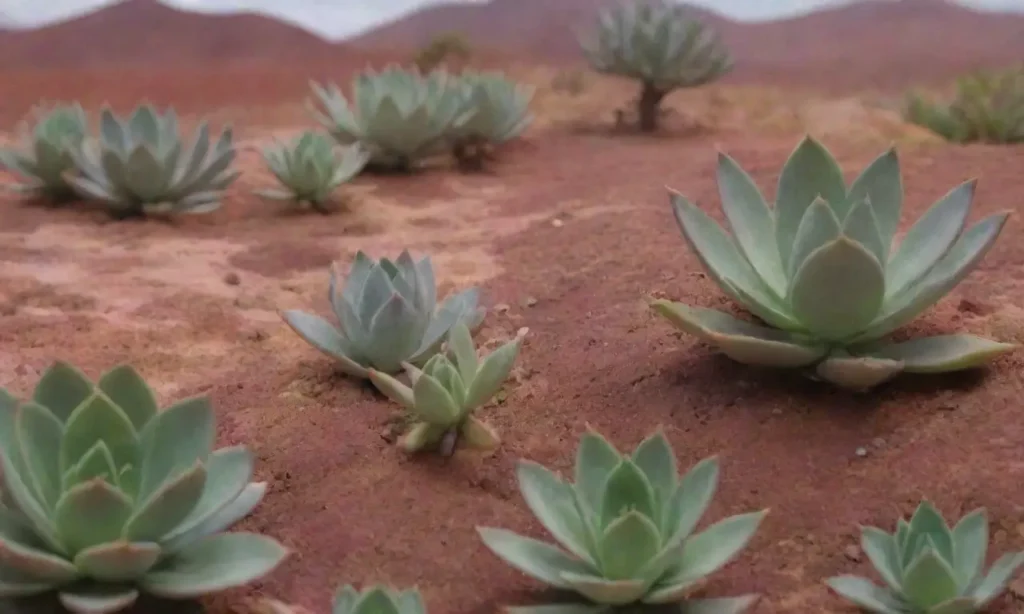
The Role of Humidity in Shaping Succulent Biome Capabilities

Introduction
Succulents are fascinating plants that have evolved to thrive in some of the most arid and challenging environments on Earth. Their unique adaptations allow them to store water and withstand long periods of drought, making them a popular choice among gardeners and plant enthusiasts alike. However, one crucial factor that significantly influences the growth and health of succulents is humidity. While these plants are known for their drought tolerance, their interaction with humidity levels plays a vital role in their overall biome capabilities.
This article will delve deeply into the relationship between humidity and succulents, exploring how it impacts their physiological processes, ecological interactions, and adaptations. We will investigate the intricacies of water storage mechanisms in succulents and how these can be affected by varying humidity levels, alongside the broader implications for the ecosystems these plants inhabit.
The Physiological Adaptations of Succulents
Succulents are plants that have developed specialized structures to store water, enabling them to survive in environments where water availability is limited. Their adaptive capabilities involve several physiological mechanisms, and understanding how humidity influences these systems is crucial.
Water Storage Mechanisms
At the core of every succulent's survival strategy lies its ability to store water in various tissues. This water storage primarily occurs in specialized cells known as parenchyma cells, which can swell and shrink based on water availability. Succulents, such as aloe and jade plants, possess fleshy leaves or stems that act as reservoirs. In conditions of high humidity, these plants may absorb excess moisture from the air directly through their surfaces, effectively supplementing their stored water and enhancing their biome capabilities.
Moreover, during periods of high humidity, transpiration – the process by which water vapor escapes from plant surfaces – can decrease. In succulent plants, this reduced rate can lead to a more efficient water use strategy, as they conserve their internal water stores. This ability allows succulents to endure longer periods of dryness without suffering from desiccation. Humid conditions often encourage lesser water loss through stomatal conductance, a significant driver of plant water relations, enabling succulents to thrive amid fluctuating environmental conditions.
Photosynthesis and Humidity
The process of photosynthesis is vital for the energy production of succulents. However, high humidity can significantly influence this process, especially regarding stomatal opening. In general, succulents exhibit a strategy known as Crassulacean Acid Metabolism (CAM), where they open their stomata at night to minimize water loss during the heat of the day. During periods of elevated humidity, succulents may be able to keep stomata open longer during the day, resulting in enhanced photosynthesis. This change can lead to improved growth rates and increased biomass production.
But it isn't just the timing of stomatal opening that affects photosynthesis; the ambient humidity itself plays a pivotal role in leaf temperature regulation. High humidity can lower the evaporative cooling effect, meaning that succulents might be more effective at maintaining optimal temperatures for photosynthesis. When temperatures remain low due to higher humidity, photosynthetic efficiency improves, creating a favorable environment for growth.
 How to Cultivate Biome-Specific Succulents in Your Garden
How to Cultivate Biome-Specific Succulents in Your GardenTemperature Regulation and Humidity's Influence
Another crucial physiological adaptation of succulents is their capacity to regulate internal temperatures, especially under extreme environmental stress. Humidity levels influence this thermal balance significantly. In humid conditions, evaporative cooling can take effect, allowing succulents to manage leaf temperature more effectively. The plant's water reserves can also buffer against temperature fluctuations, thus maintaining a stable internal environment.
On the flip side, in arid regions where succulents often dwell, humidity can dramatically drop, leading to desiccation. Under low humidity conditions, succulents may close their stomata to conserve water, which inevitably limits growth and metabolic activity. Consequently, understanding the delicate balance between humidity and temperature regulation is crucial for cultivating succulents in controlled environments, such as greenhouses or indoor gardens, where both parameters can be managed more effectively.
The Ecological Role of Humidity in Succulent Biomes
Succulents often inhabit specialized ecosystems characterized by extreme conditions. Their biomes, such as deserts and semi-arid regions, rely on a delicate interplay of moisture, temperature, and overall environmental stability. Humidity not only affects individual succulents but also significantly impacts wider ecological interactions in these environments.
Biodiversity and Species Interactions
Humidity is a pivotal factor in determining the biodiversity of succulent biomes. Higher humidity levels can create microhabitats that support various species, enabling a more complex ecological community. For instance, succulents surrounded by high humidity may nurture a rich diversity of organism interactions, as these plants can influence the moisture levels of their immediate environment.
Epiphytic plants, for example, often coexist with succulents in more humid areas. These plants derive moisture and nutrients from the air and the humidity created by their succulent counterparts. The presence of succulents can help enhance local humidity levels, thus indirectly promoting biodiversity. Such interactions can lead to intricate relationships where different species share resources and support each other’s growth.
Conversely, in extremely arid regions, succulents become primary species, with very few others able to compete for the limited resources. Such environments emphasize the vulnerability of ecosystems to shifts in humidity, with the potential for cascading effects on overall biodiversity. Ecologists are particularly interested in the resilience of these biomes to climate change and its associated impacts on humidity patterns.
The Role of Microclimates
In succulent habitats, humidity often manifests in microclimates, which are small, localized areas that differ from the broader environmental conditions. These microclimates can arise from specific landscape features, such as rocky outcrops or shaded areas, and determine humidity levels that directly influence succulent growth and competition with other plant species.
 Adaptations Beyond Appearance: The Biochemistry of Succulents
Adaptations Beyond Appearance: The Biochemistry of SucculentsSucculents in sheltered locations may be able to thrive in conditions that might otherwise be too harsh for less resilient species. For instance, sedum species growing on a shaded slope receive more stable humidity levels, allowing them to maintain water balance more efficiently. The presence of nearby larger plants can create additional shading, resulting in localized increases in humidity, which can benefit the surrounding vegetation.
Understanding the role of microclimates is essential for conservation efforts, particularly in regions facing environmental degradation. As climate variability becomes more pronounced, protecting these unique habitats and recognizing their potential for resilience will become increasingly important.
Climate Change and Its Effects
The relationship between succulents and humidity is becoming increasingly perturbed due to the effects of climate change. Rising temperatures often lead to reduced humidity levels during critical growth periods for succulents, exacerbating stress and potentially jeopardizing their ecological roles. Conversely, increasing humidity levels in certain regions may lead to fungal diseases and other challenges that succulents are not well equipped to handle.
Moreover, climate change can lead to more unpredictable weather patterns, resulting in extreme conditions that can shift the equilibrium of existing ecosystems. As such changes begin to manifest, understanding the feedback loops between humidity and succulent capabilities will prove crucial for predicting future shifts in ecosystem dynamics.
Adaptive management strategies that account for potential variability in humidity levels will be vital for conserving succulent biodiversity and fostering resilience in their ecosystems. Research efforts into how different succulent species respond to varying humidity conditions should be prioritized to ensure these plants can continue to thrive amid changing climates.
Conclusion

In summary, the role of humidity in shaping succulent biome capabilities is an intricate dance that involves physiological adaptations, ecological interactions, and environmental considerations. Succulents have engineered remarkable adaptations that allow them to survive in harsh conditions, heavily influenced by humidity levels. Their ability to store water, regulate temperature, and participate in complex ecological relationships underscores their significance in the ecosystems they inhabit.
 Mimicking Nature: Lessons from Succulent Adaptation Techniques
Mimicking Nature: Lessons from Succulent Adaptation TechniquesAs we navigate the challenges posed by climate change, the need for deeper understanding and appreciation for how humidity affects these plants becomes increasingly critical. By recognizing the nuanced relationship between humidity and succulents, we can make better-informed decisions for conservation and cultivation efforts. Protecting these beautiful plants not only secures their continued existence but also preserves the rich biodiversity of the environments they support.
As we look towards the future, collaborative efforts in research, conservation, and education will ensure that the remarkable biome capabilities of succulents persist. The more we understand the interplay between these resilient plants and their environments, the better equipped we become to foster healthy ecosystems that can withstand the challenges brought about by a changing world.
If you want to read more articles similar to The Role of Humidity in Shaping Succulent Biome Capabilities, you can visit the Biome Adaptations category.






You Must Read